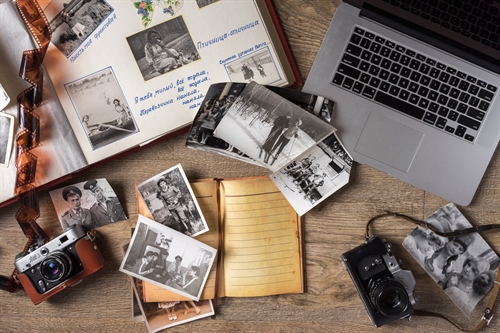It’s a chilling scenario, but if your home was on fire or the flood waters were rising, what would you want to save? Of course you would make sure everyone was out of the property and all your pets were safe. But, family heirlooms and photos are among the unique mementoes that can never be replaced.
Thanks to social media, many of our photos and video clips are now shared instantly and then forgotten. Not many of us get our photographs printed, preferring instead to store things digitally, backed up to our hard drives and iCloud. If we are extremely organised, we might also store them on memory sticks or burn them to CDs or DVDs.
How to use Apple iCloud storage
iCloud ensures you have access to a copy of the information on your iPhone, iPad or iPod touch, and you can easily set up a new device or restore information on one you already have.
You automatically get 5GB of storage with your Apple account and when that has been used up, you can upgrade from any Apple device or Windows PC. The monthly payments start at 79p for 50GB. To find out more see Apple’s site.
The benefits of an off-site, off-Cloud copy
However, if you have actual prints, it is very important to store them safely and in a way that will preserve their quality and colour. A photograph is a fragile thing, made of paper and printed with ink, both degradable.
If one of your lockdown goals is to get all your old photos into albums, make sure you use good quality ones that are free of acid, lignin and PVC. The paper needs to be ‘archival’ quality, something that will endure and will not damage your photos.
Keeping your old photos in a box in the attic or garage is not ideal. Both of those places can be damp and suffer extreme fluctuations in temperature. Why not consider a storage facility – somewhere dark, where the air will be dry and the temperature constant?
Finding the right storage facility
You can box up your old photos and albums, as well as your CDs, DVDs and memory sticks, and keep them in a storage facility. They will be safe from the elements and from nibbling little creatures like mice and squirrels who like to invade our attics and garages. A climate-controlled facility is important when storing photographic prints. See our post about climate-controlled storage.
How much does storage cost monthly?
Climate-controlled storage will be slightly more expensive, but it is hard to put a price on something as precious as family photos. Many of us will already have seen the damage done to our old photos kept in peel-back film albums in a damp attic. Those images may be all we have left of a happy childhood, a much loved relative or our holiday of a lifetime. Climate-controlled storage should give you peace of mind in the future, and you can back that up with a good storage insurance policy. Unfortunately, you can’t insure the actual images, but should the worst happen, your Store and Insure policy will cover your media and stationery. So get a quote today from Store and Insure.




